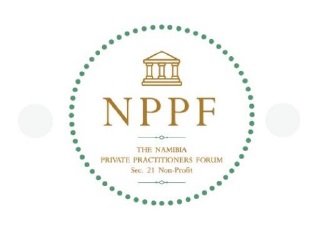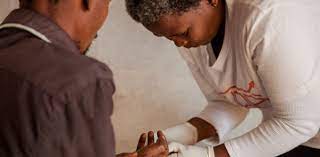
Ambulances for mothers and infants

World Health Organization representative Dr Monir Islam, Head of the Economic and Social Section at the EU Delegation, Mr Markus Theobald and Minister of Health and Social Services, Dr Richard Kamwi in one of the two new ambulances given to his ministry.
Push for the main objectives of the Programme for Accelerating the Reduction of Maternal and Child Mortality (PARMaCM), the Ministry of Health received nine fully-equipped ambulances amounting to a total cost of around US$900,000. The PARMaCM project is a joint initiative between the Ministry of Health and Social Services (MOHSS), the European Union (EU) and the World Health Organization (WHO).
The PARMaCM project aims to accelerate the achievement of MDGs 4 and 5 of Reducing Child Mortality and Improving Maternal Health, along with five specific objectives: to support adolescent friendly health services; to support the maternal, new born, child health and nutrition programmes of the ministry; to mobilize communities for improved maternal, new born and child health; and to build capacity in selected districts and training institutions.
Minister of Health and Social Services, Hon Dr Richard Kamwi said, “We know that access to health care is sometimes difficult. Referral to the next hospital in case of emergency may be complicated and our mothers in need often encounter fatal delays in receiving health care on time.”
“We therefore welcome these ambulances which will be sent to the six PARMaCM districts: Opuwo, Katima Mulilo, Okongo, Outapi, Gobabis and Keetmanshoop and the three Intermediate referral hospitals Oshakati Intermediate Hospital, Onandjokwe Hospital and Rundu Intermediate Hospital to improve access to and quality of Emergency Obstetric and Neonatal Care Services.” he elaborated.
Also speaking at the event, the Head of the Economic and Social Section at the EU Delegation, Mr Markus Theobald stated that, “significant steps have been taken in the first year of the implementation of the four-year programme, and we are now in the second half of the second year. Health workers, managers and staff of the Ministry of Health and Social Services and ambulance drivers were trained on various topics in the areas of maternal and child health. Two Maternal and Child Health weeks have been conducted in eighteen districts in seven regions. These accomplishments are worth celebrating.”
The WHO representative, Dr Monsir Islam added that, “the ambulances are specifically designated to improve access to Emergency Obstetric and Neonatal Care. It is therefore our utmost duty to provide protection and thus contribute to alleviate the transport situation in the six PARMaCM districst, the three intermediate referral hospitals and improve access to Emergency Obstetric and Neonatal care services.” Two out of the nine ambulances were on display at the handover, while the rest are set to arrive later.
The minister stressed that the contingency plans set in place to handle any cases of Ebola that may arise within the country have been activated. He explained that strict measures have been put in place at Hosea Kutako Airport, Walvis Bay and Oshikango to screen passengers on all flights. He also congratulated Air Namibia on their immediate response concerning the earlier suspected infected passenger.












































